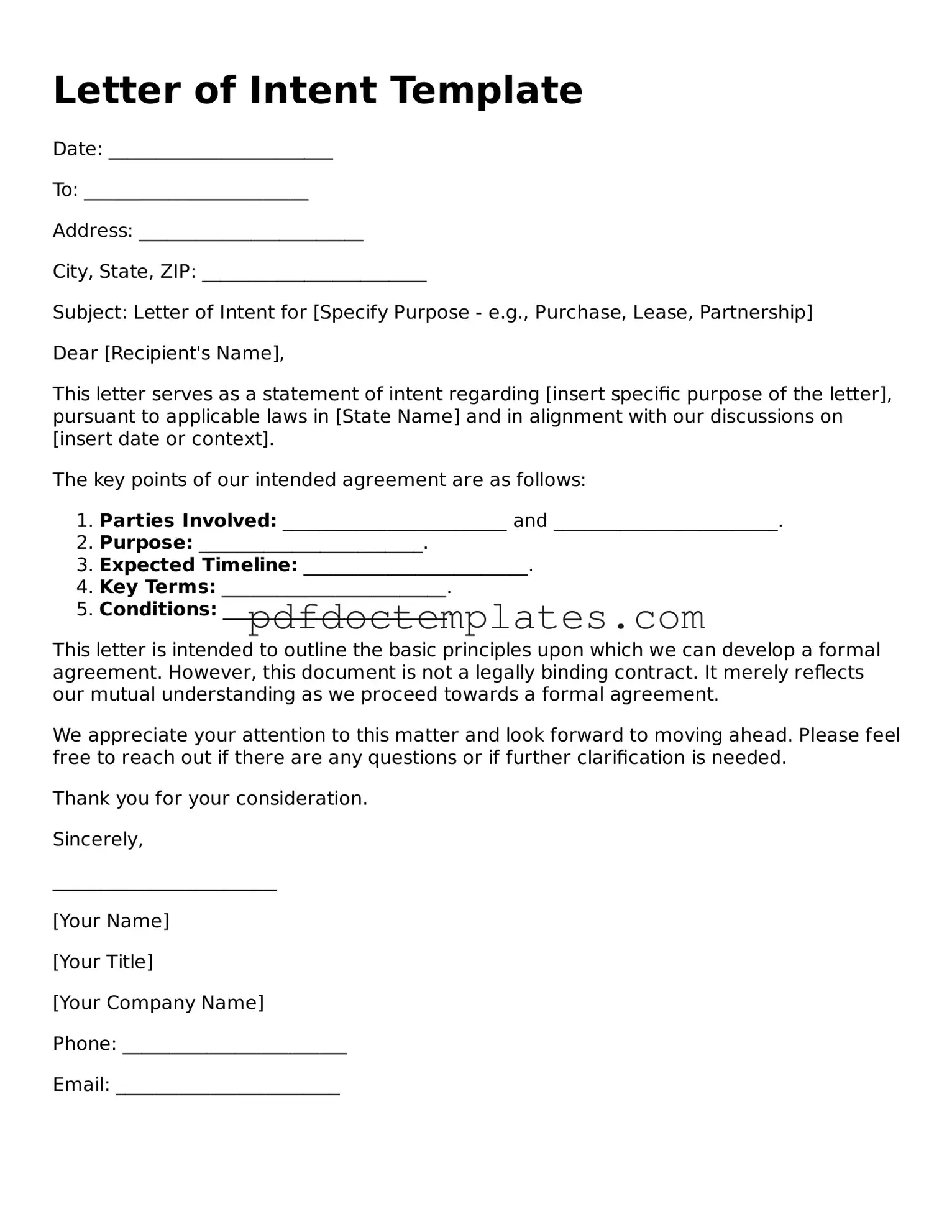Letter of Intent Template
Date: ________________________
To: ________________________
Address: ________________________
City, State, ZIP: ________________________
Subject: Letter of Intent for [Specify Purpose - e.g., Purchase, Lease, Partnership]
Dear [Recipient's Name],
This letter serves as a statement of intent regarding [insert specific purpose of the letter], pursuant to applicable laws in [State Name] and in alignment with our discussions on [insert date or context].
The key points of our intended agreement are as follows:
- Parties Involved: ________________________ and ________________________.
- Purpose: ________________________.
- Expected Timeline: ________________________.
- Key Terms: ________________________.
- Conditions: ________________________.
This letter is intended to outline the basic principles upon which we can develop a formal agreement. However, this document is not a legally binding contract. It merely reflects our mutual understanding as we proceed towards a formal agreement.
We appreciate your attention to this matter and look forward to moving ahead. Please feel free to reach out if there are any questions or if further clarification is needed.
Thank you for your consideration.
Sincerely,
________________________
[Your Name]
[Your Title]
[Your Company Name]
Phone: ________________________
Email: ________________________
